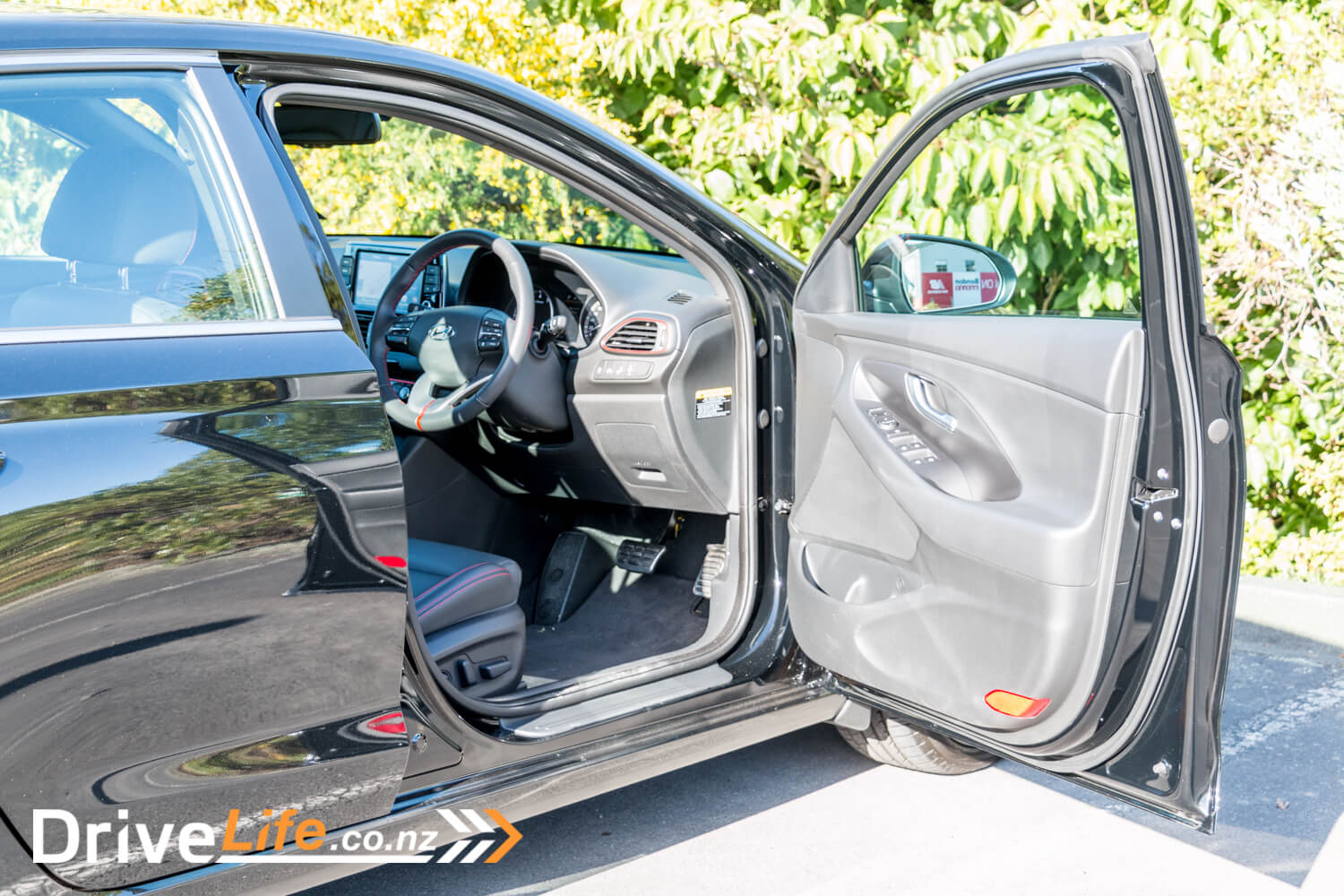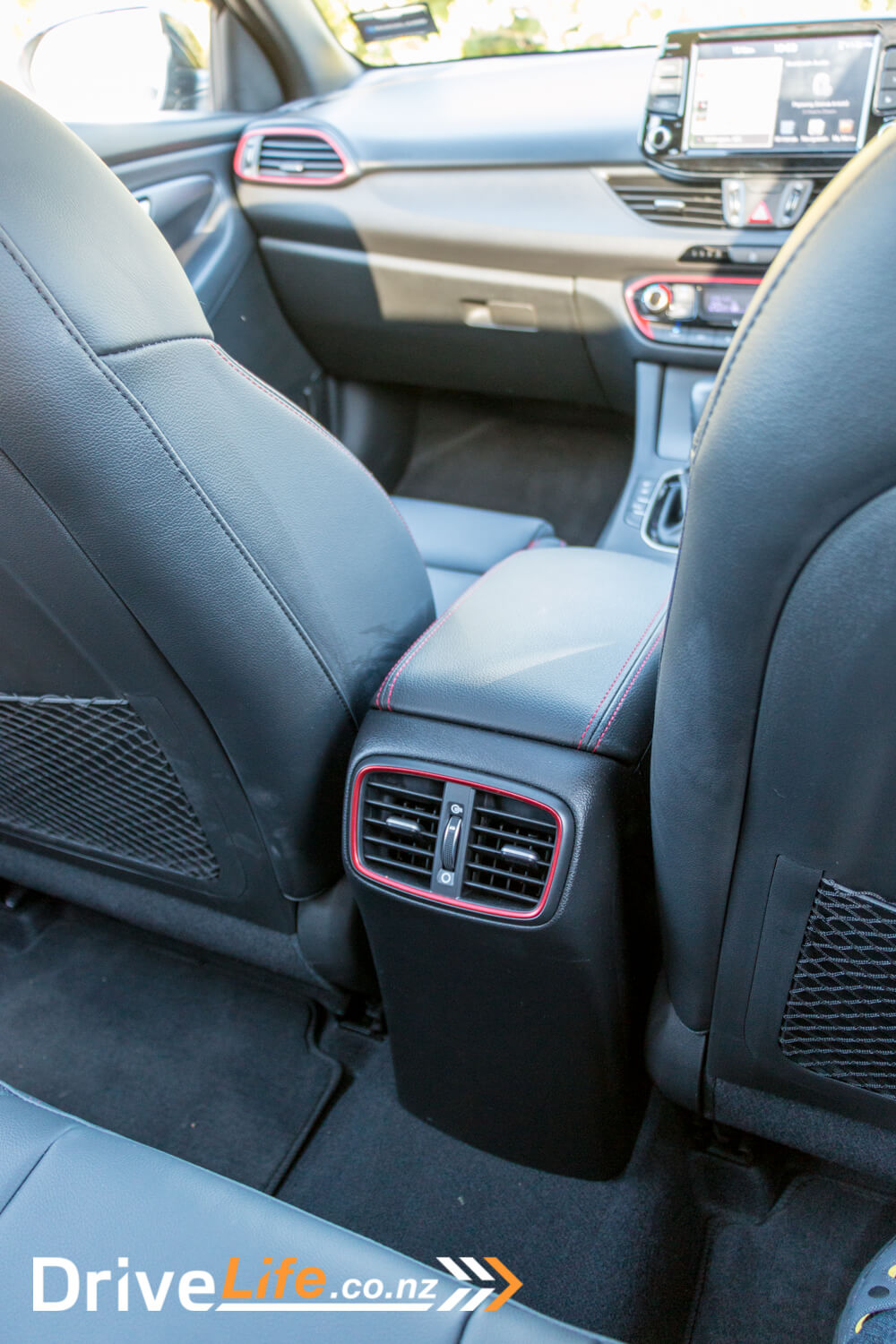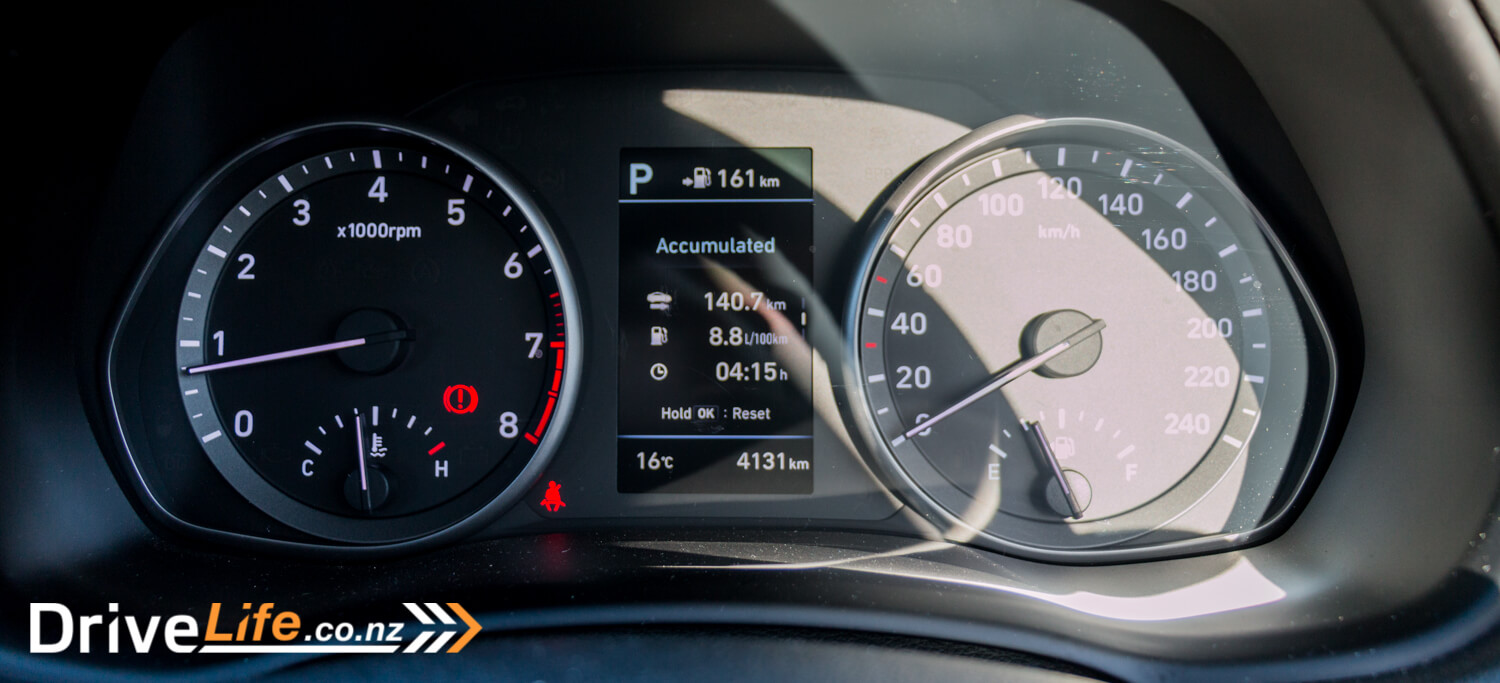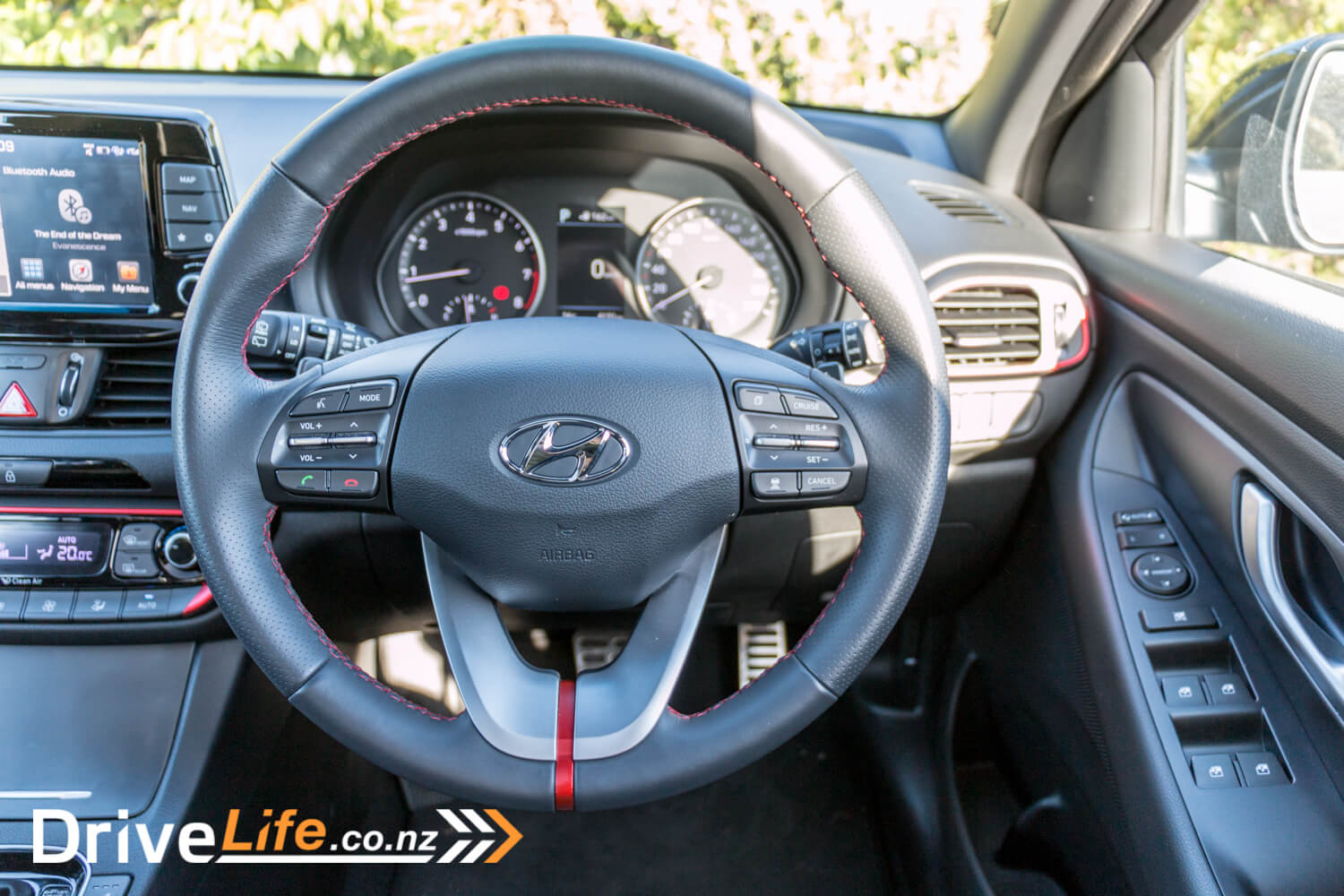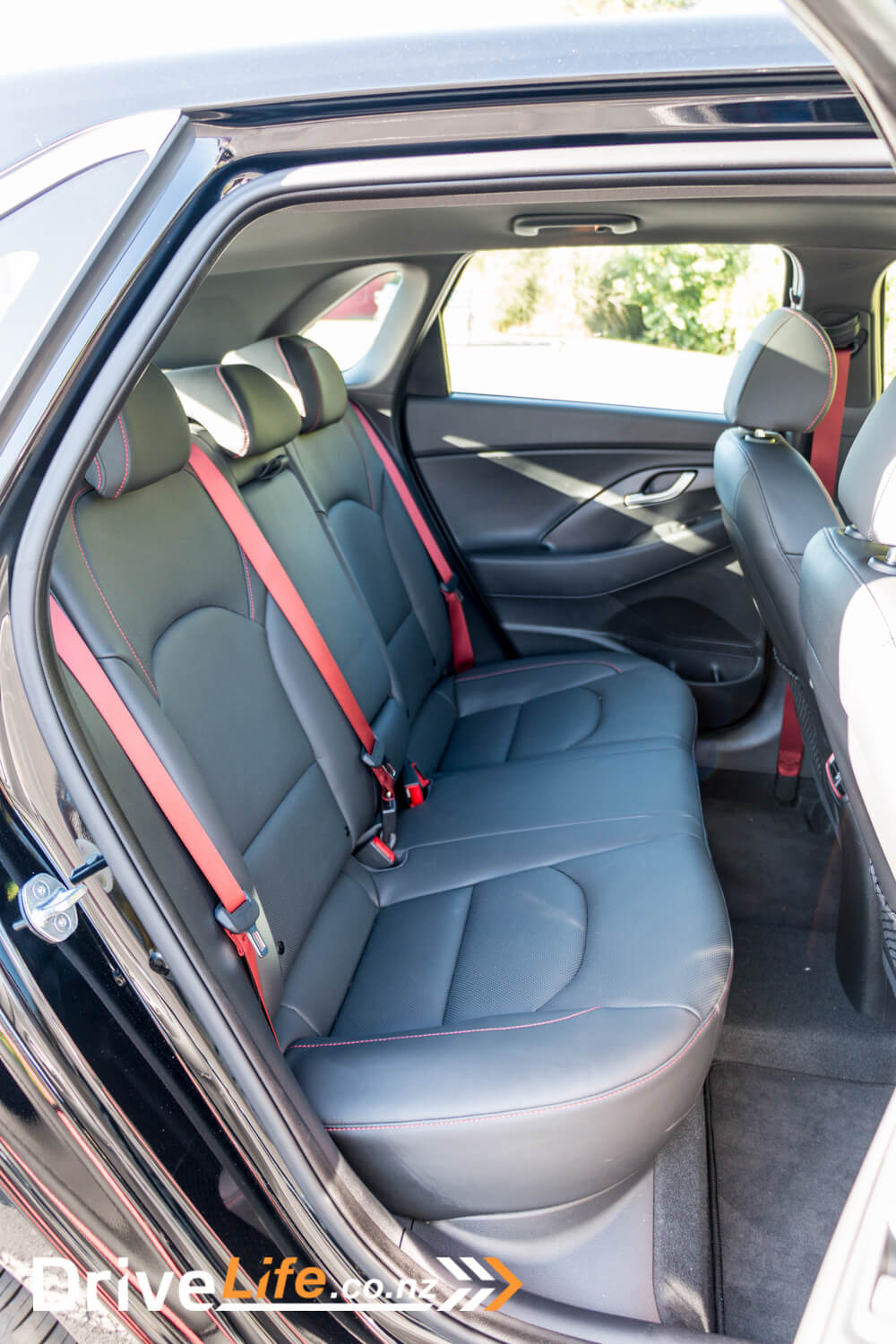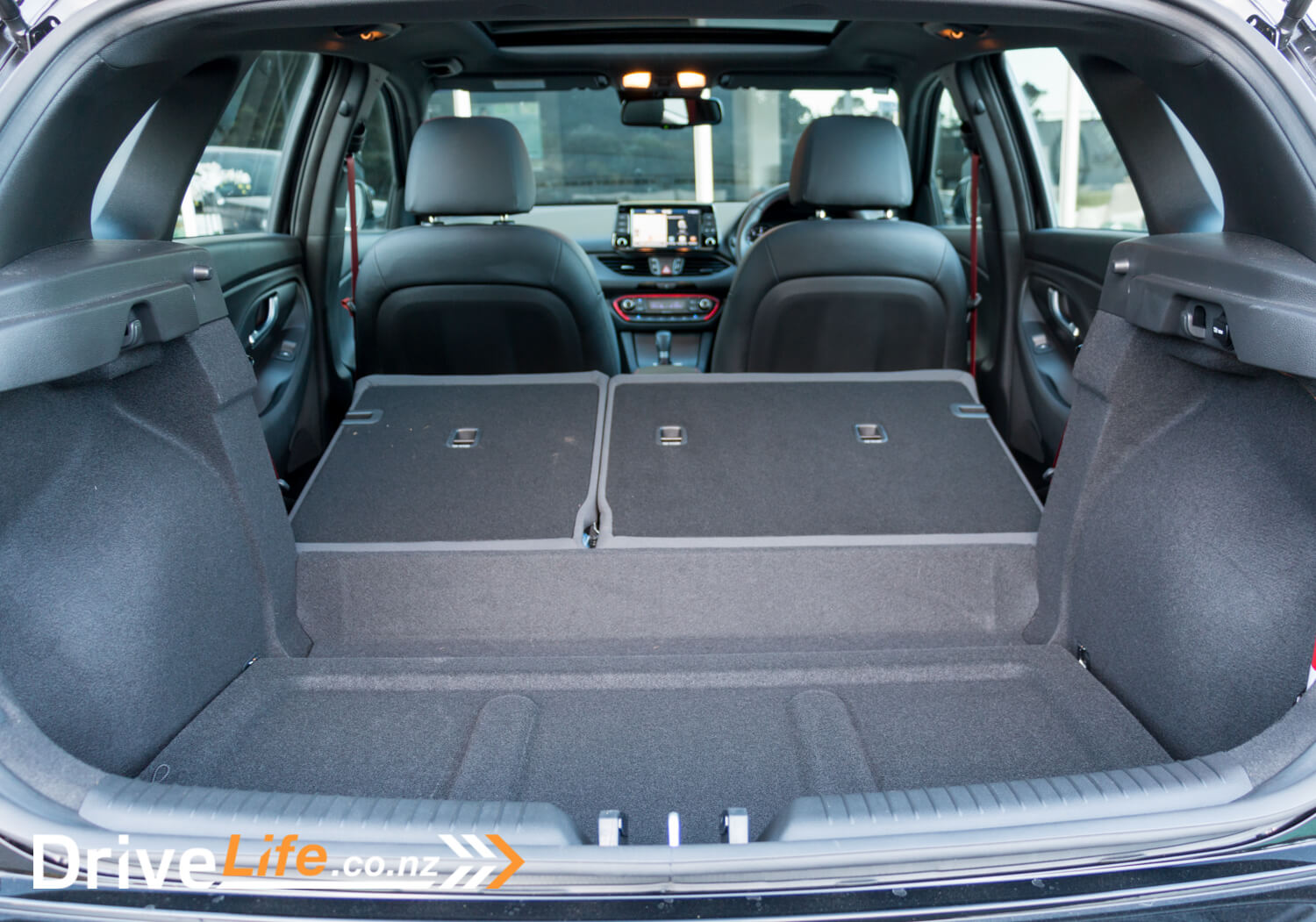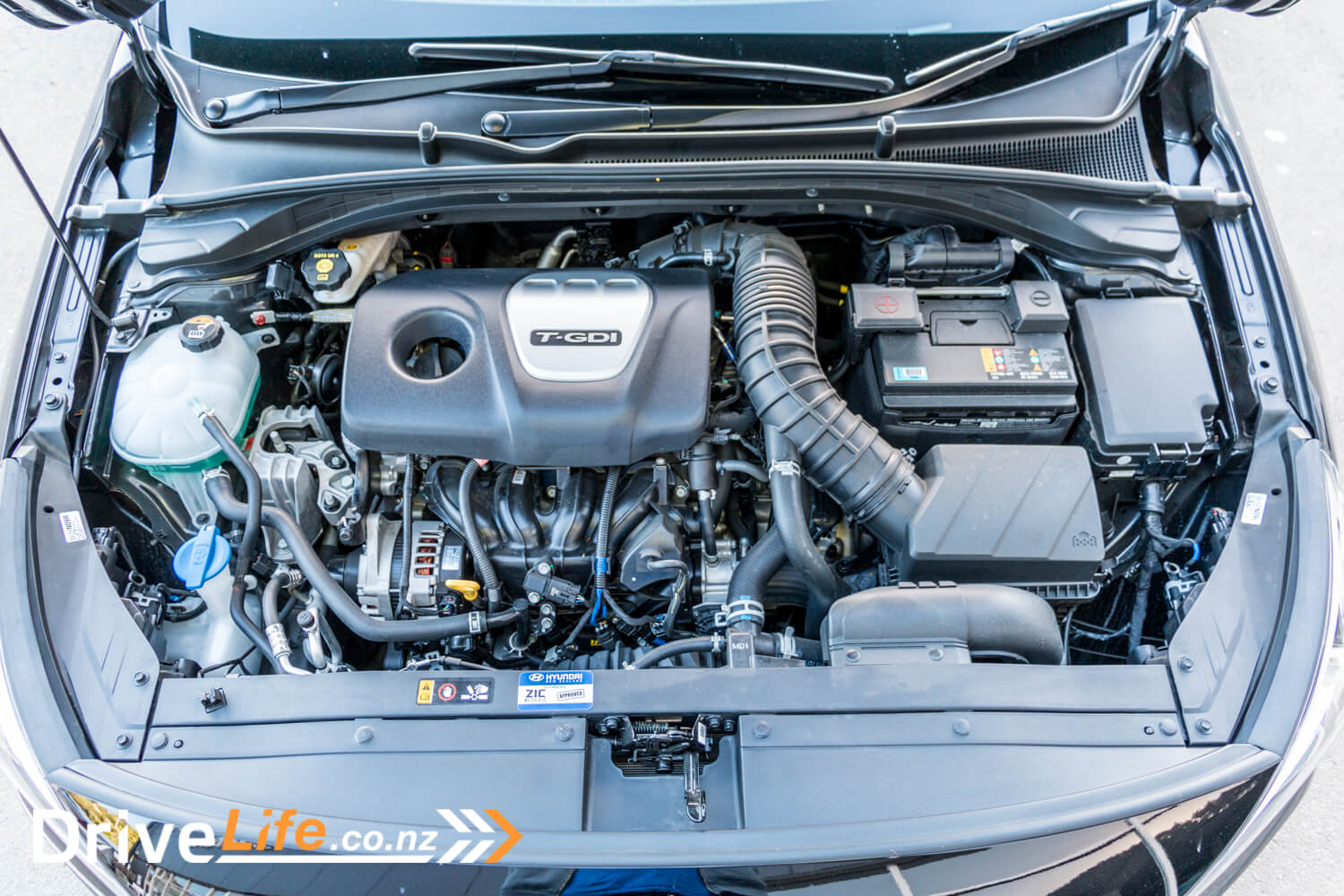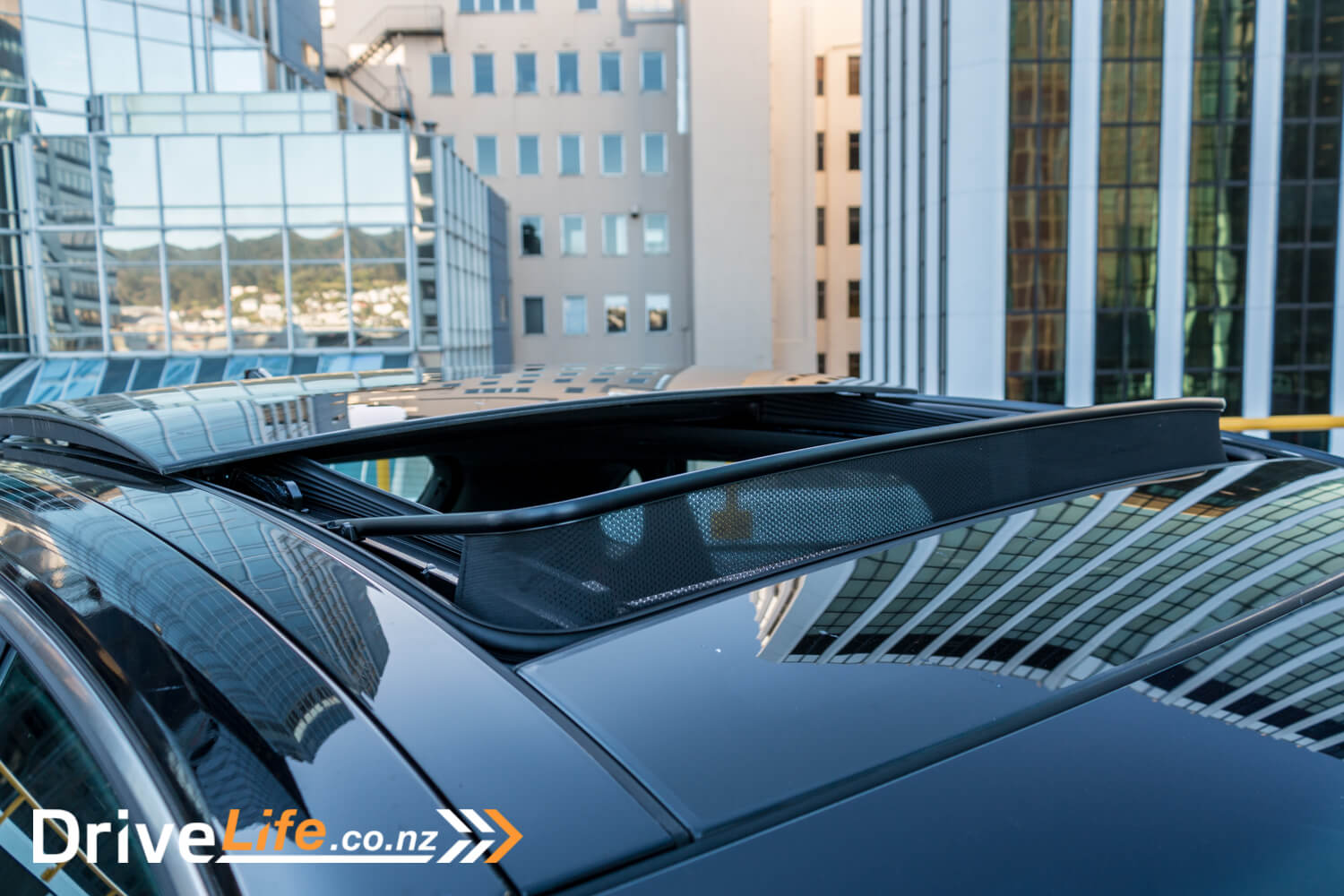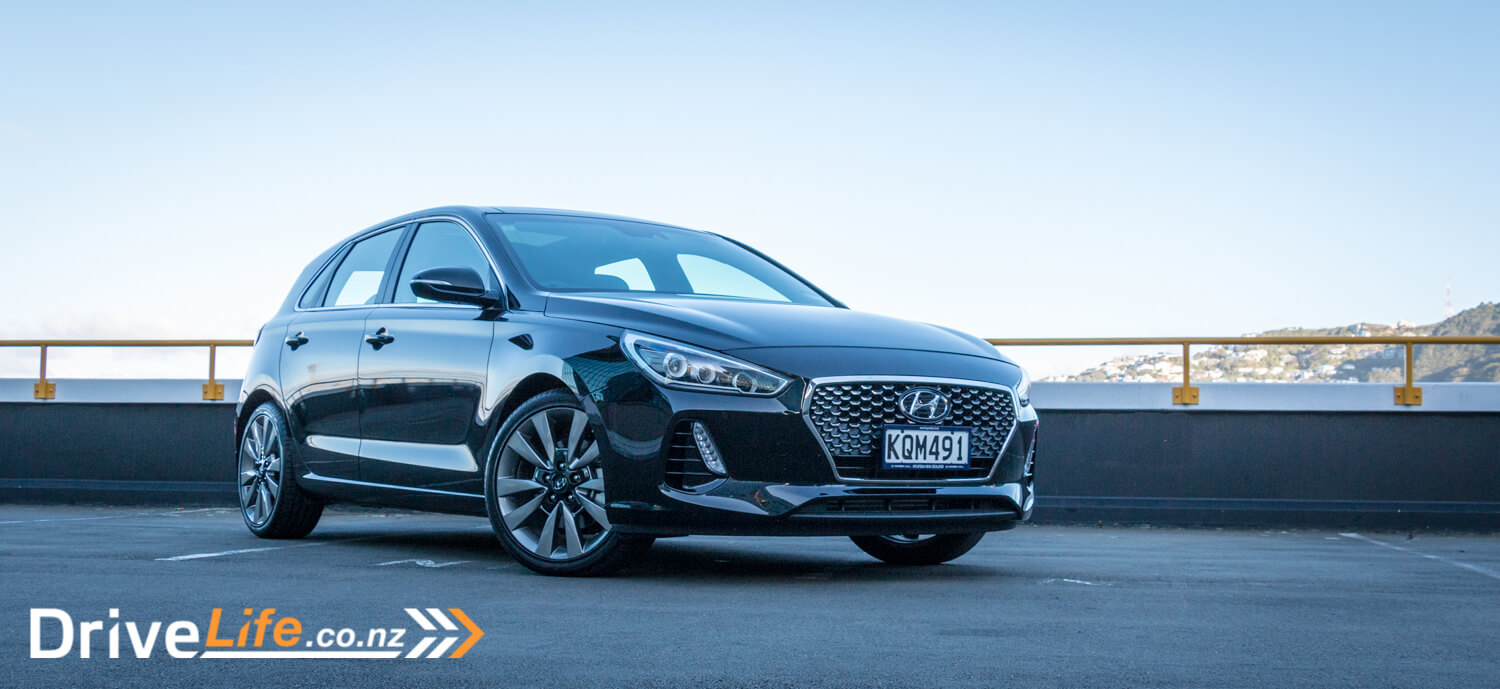Hyundai recently launched their third-generation i30, with improved looks, technology and safety levels. There has been some excitement over the sporty N model which looks like it might give the Golf R a run for its money. We don’t have that yet in New Zealand but we do have the Turbo Limited, which has the Golf GTI firmly in its sights. Hyundai gave us one for a week to see what we thought.
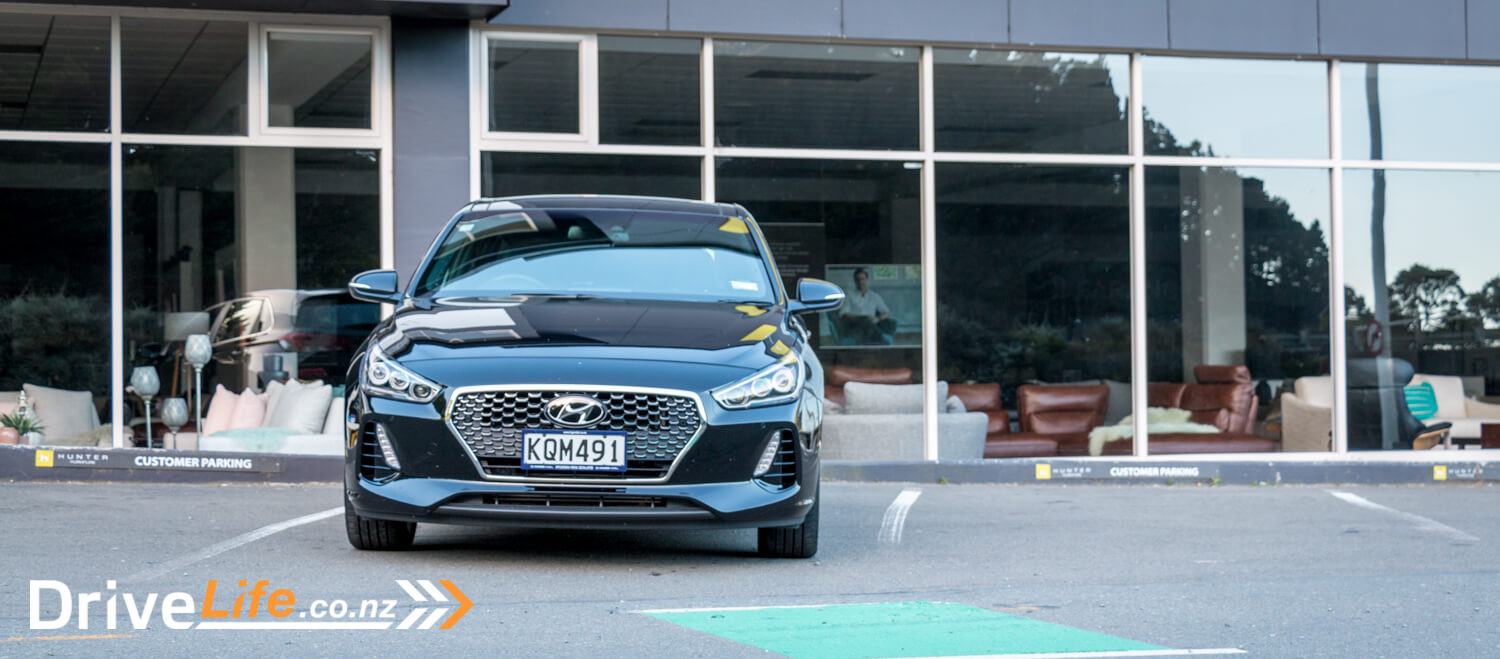
The Range
There are currently three specs of i30 available – The $35,990 Hatchback with a 2.0l 120kW/203Nm normally aspirated engine connected to a 6-speed auto transmission. Standard spec includes heated electric mirrors, ABS and EBD, Brake Assist, Traction control, Stability Management, Blind Spot Monitoring, Rear Cross-Traffic Alert, 7 airbags, seatbelt pre-tensioners, auto lights, rear parking sensors, Apple Carplay and Android Auto and manual air conditioning.
The $39,990 Elite Hatch adds leather trim with heated front seats, auto-dimming mirror, auto wipers, dual-zone climate, 4.2” colour instrument display, keyless entry and start.
Finally the $43,990 Limited Hatch swaps to a 1.6 litre turbo engine producing 150kW/265Nm and a 7-speed dual-clutch transmission. It adds LED headlights and taillights, panoramic glass roof, leather sport interior, heated and ventilated front seats, autonomous emergency braking, lane assist, and driver attention alert.
There are nine colours available – three bright ones: orange, red and blue, plus a darker blue, white, silver, grey, black and brown. I’ll never understand why people buy brown cars, but each to their own!
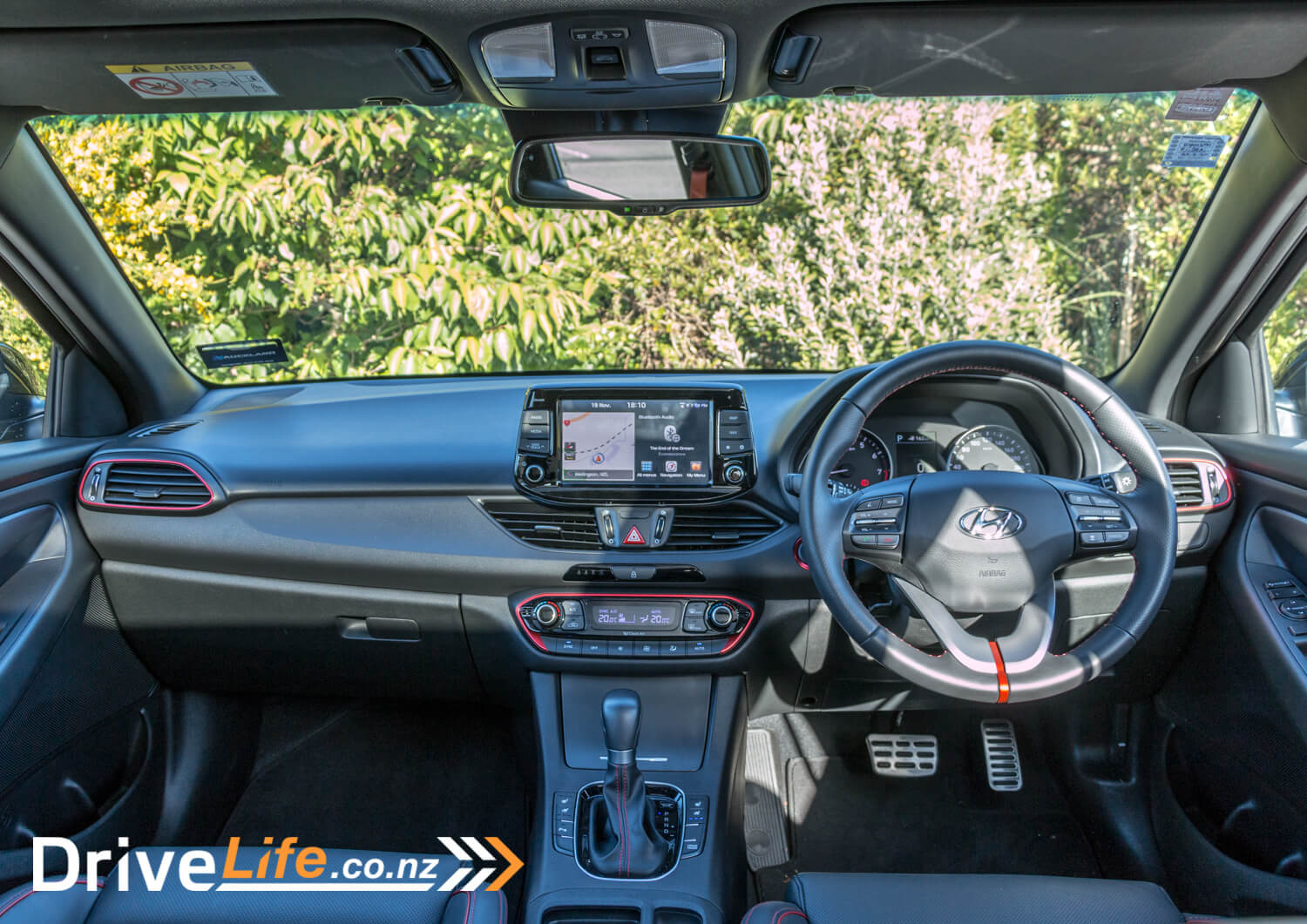
First Impressions
The i30 is a handsome thing, with the big Hyundai grille and aggressively sloped headlights. Looking at the rear I couldn’t help thinking of the Mk7 Golf, which is no bad thing. It looks great with its twin exhausts. There’s just enough detail on there for it to look smart, but remain understated.
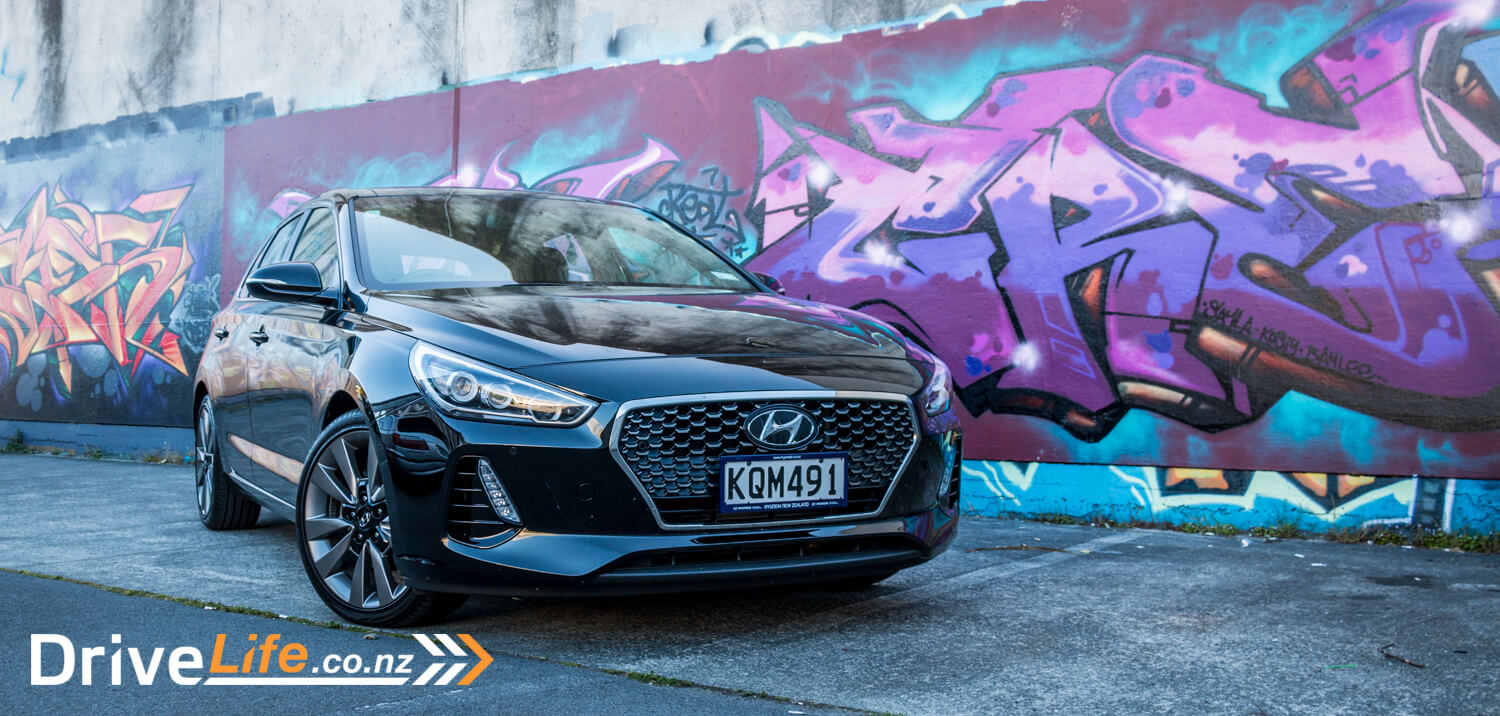
The Inside
The inside of the i30 is very pleasant indeed, with the black sports leather seats and red stitching. There are red highlights dotted around too, and racy red seatbelts to give the car a more sporty feel. The driver gets electric adjustment, but passenger doesn’t, and the steering wheel adjusts in four directions. The front seats can be heated or cooled depending on your mood and the weather conditions.
The main dash is pretty simple, but Hyundai seem to have taken a leaf from Mercedes’ book when it comes to the central 8” touchscreen, sticking it in the middle like an afterthought. It’s positioned well for viewing and reach but looks awkward. It does have physical knobs for volume and track, which I like, as well as buttons for its main functions. It defaults to a home screen of half satnav and half stereo display, which I really like.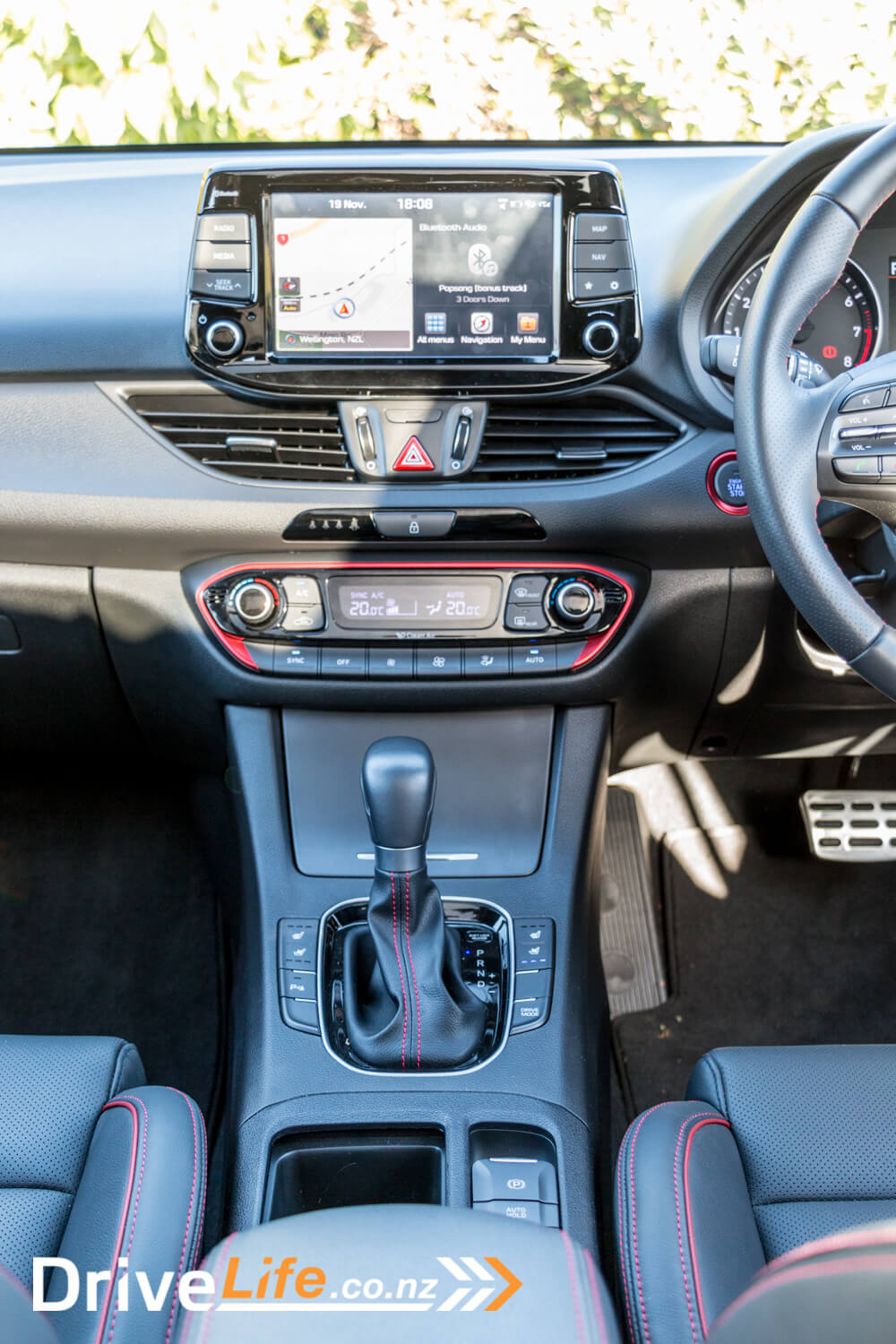
They’ve kept it simple with the instruments – just a large rev counter and speedo, with a 4.2” colour display in the centre for everything else. This can show various displays including trip computer, satnav directions, radio station or digital speedo.
With black seats, carpets and headlining the i30 would be dark inside, but Hyundai have included a panoramic glass roof as standard in the Limited. This is one of my favourite things in modern cars and makes a huge difference to interior feel. The front section pops up or slides open, popping up an exterior wind guard, or there’s a full-length electric blind if you want to close it all up. I found that if you opened the roof at over 80kph there was a lot of wind noise and buffeting.
The steering wheel is trimmed in perforated leather and has a good shape and feels good to hold. The thumb controls for stereo, phone and cruise control fall easily to hand and don’t need much getting used to. There’s a sporty red insert at the bottom to remind you you’re in the turbo i30.
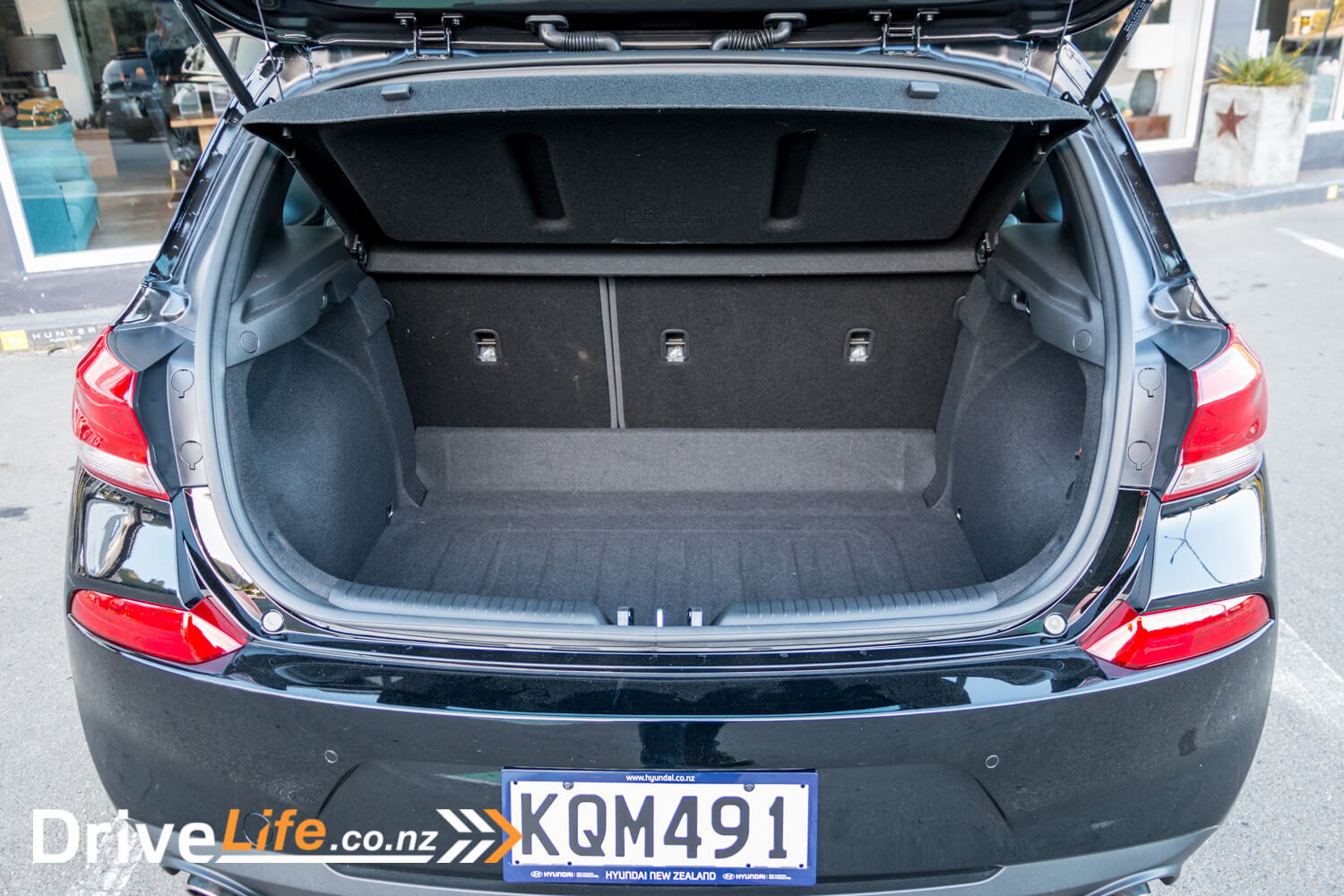
In the centre are cup holders and a cubby with a pop-up cover which contains a wireless phone charging pad as well as the usual power socket, USB and aux. There are some cheaper-feeling plastics around the cabin but in general it’s a really nice interior, and the touch points all feel solid and well-made.
Rear passengers get good leg room for a car in this class, and their own heater/cooling vent. The seats are comfortable, and with that glass roof it feels light and airy inside.
Boot space is a generous 395 litres and there are bag hooks, a power socket and loops for your tie straps or luggage net. Folding the 60/40 split rear seat backs gives an almost flat load area with 1,301 litres of total space. Unlike most manufacturers Hyundai include a fire extinguisher and first-aid kit as standard.
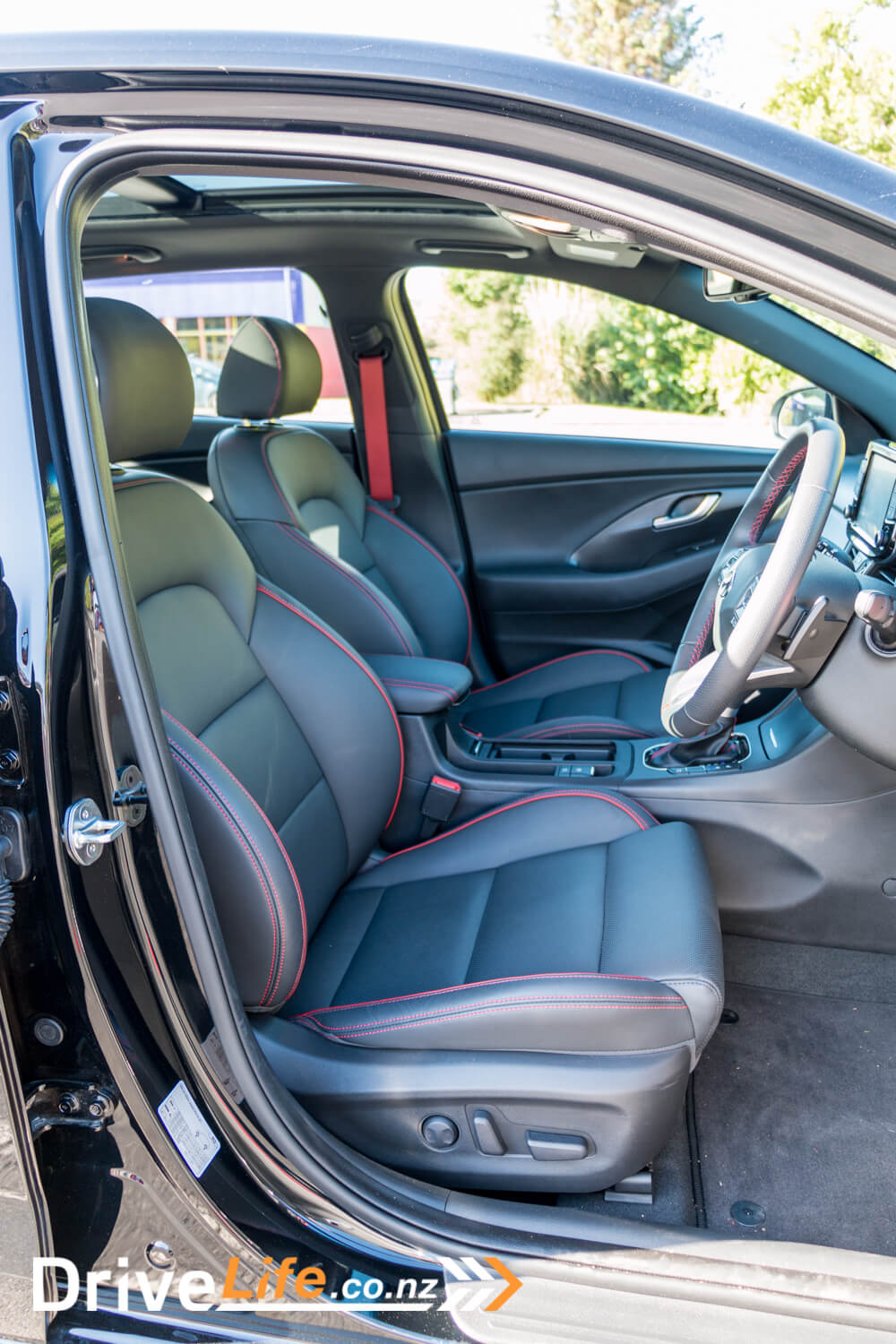
The Drive
The i30 turbo has keyless entry and start, and I like Hyundai’s welcome feature where it detects you approaching the car and turns on the puddle lights and unfolds the door mirrors. It’s so easy when you can just walk up with the key in your pocket, open the door, push start and you’re ready to go. Even the electronic handbrake is automatic, so you don’t need to remember to apply or release it. It also has a hill hold feature which works very well.
The first tech test of Bluetooth pairing went flawlessly and I was able to get my music going straight away. The six-speaker stereo sounds really good, with good bass and clear sound, but it has the annoying habit that all Hyundais exhibit where it switches back to radio every time the car is stopped and re-started. I wish they’d sort this out!
In traffic the i30 is a relaxing place to be. The seats are firm but not too firm, and are comfortable on long or short trips. Radar cruise control is included on the i30 turbo and it just works as you’d expect. Set the required speed – which is then shown on the display- and it maintains the appropriate distance to the car ahead, coming to a complete stop if required and needing a tap of the button or accelerator to resume. Simple and effective with no messing around. When cruise was activated I did sometimes find the shifts a little jerky, and I found out by accident that putting the car into sport mode sorted that out!
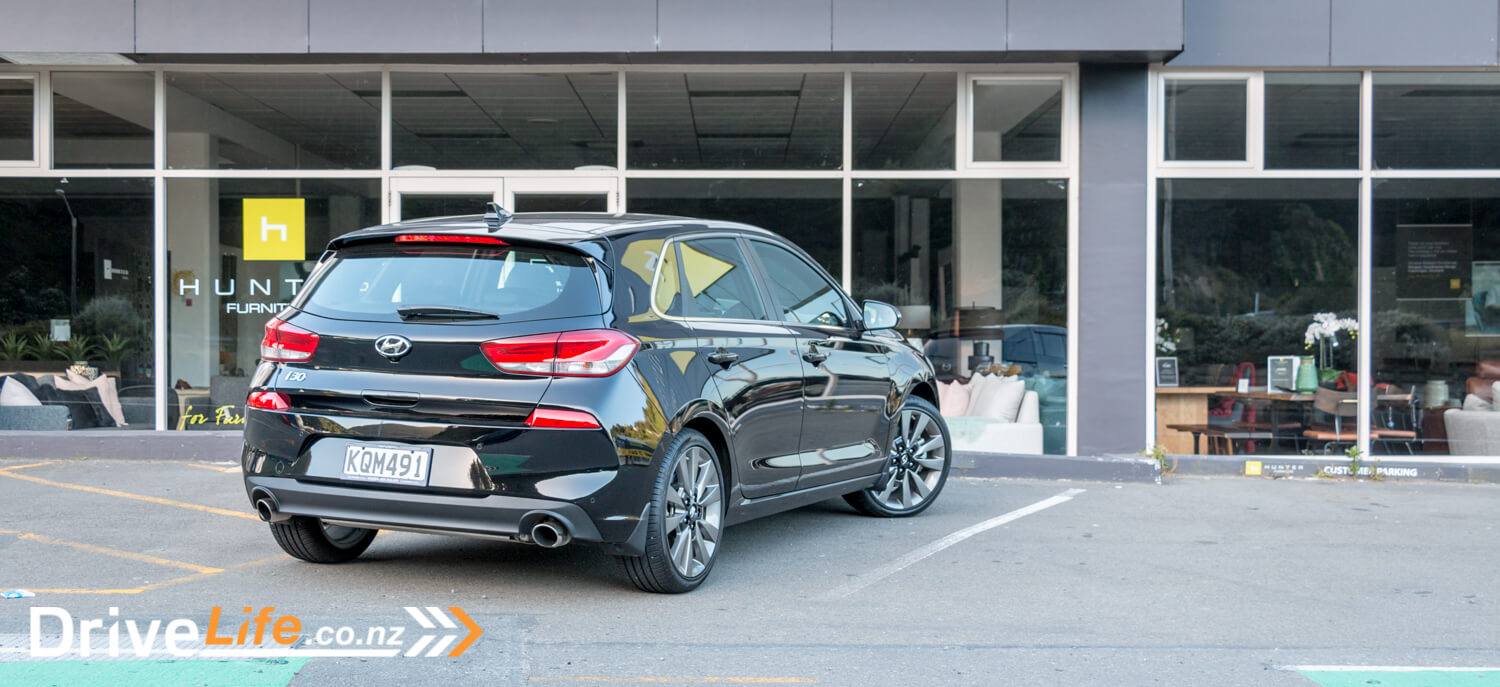
Out of traffic it was time to test out the driving modes. Eco gave the usual squashy throttle to make acceleration gentler and I found it a little frustrating. Normal felt much better but taking off from a standstill seemed a little sluggish. Sport made the i30 feel much more alive, giving the sort of hot-hatch nippiness that you want from a car like this. The seven-speed DSG transmission worked really well but was best in sport mode. In the other modes it had an occasional tendency to feel a bit jerky on shifts.
The ride is very good – comfortable, with a little bit of body roll and not too firm, dealing with bumps well. On twistier roads I’d describe the handling as competent. The i30 certainly goes where it’s pointed but there’s not as much feedback or feel as I’d like.
The i30 is a pleasure to use in day-to-day life. It’s practical, with parking sensors front and rear making it easy to park in the tightest spaces. The satnav is really good, with clear and detailed directions, though it has a very Australian accent and struggles with some Maori names. The LED headlights are excellent. Over the week I drove on mostly short trips or in traffic, with one longer drive and achieved 8.8l/100km, which is reasonably close to the quoted figure of 7.5l/100km.
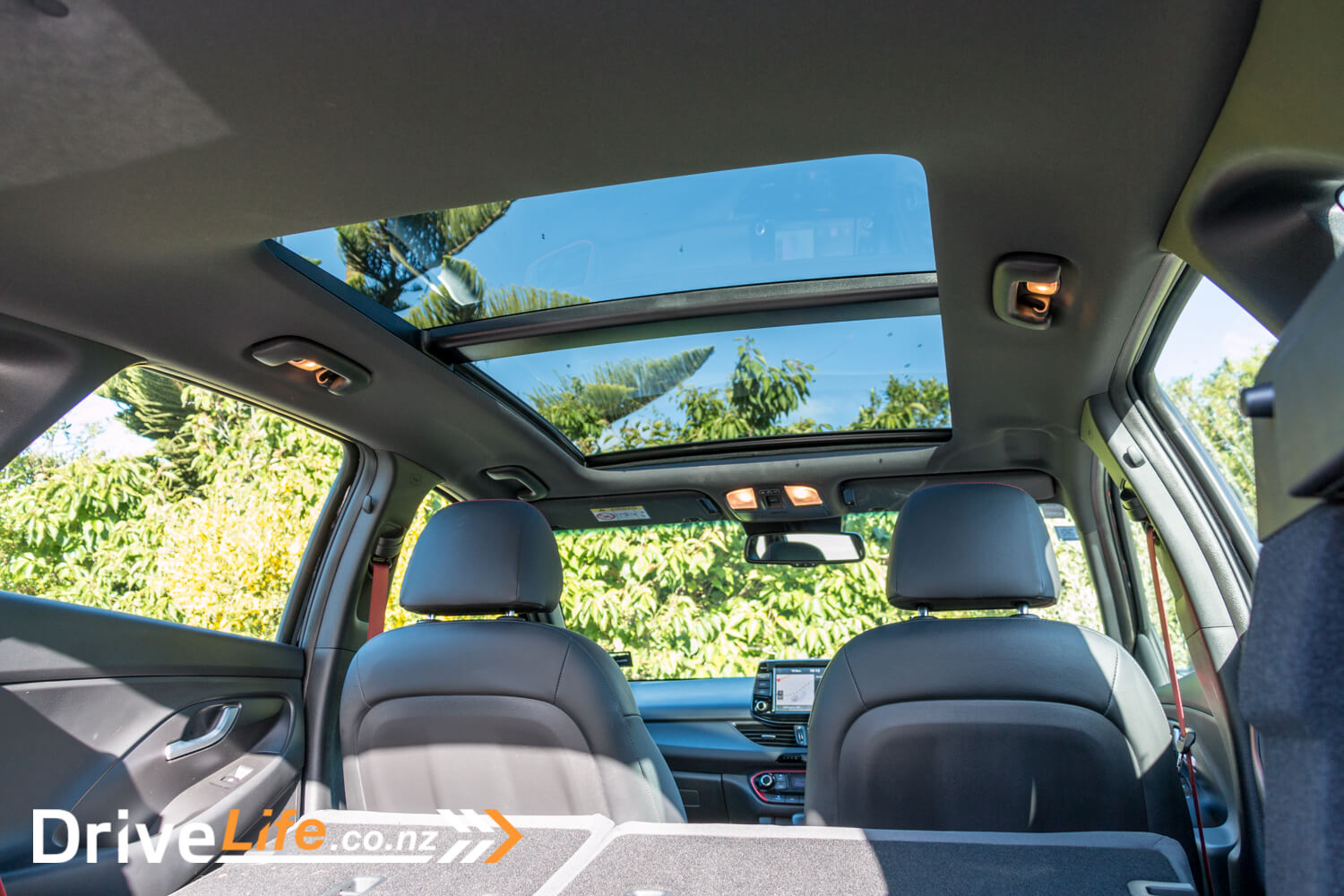
The Competition
| Brand / Model | Engine | Power | Boot Space Litres | Fuel L/100km | Price Highest to Lowest |
| VW Golf GTI | 2.0l 4 cylinder turbo | 169kW.350Nm | 380 | 6.6 | $57,390 |
| Audi A3 TFSI | 1.4l 4 cylinder turbo | 110kW/250Nm | 365 | 5.0 | $49,500 |
| Ford Focus Titanium Hatch | 1.5l 4 cylinder turbo | 132kW/240Nm | 316 | 6.9 | $46,480 |
| Alfa Romeo Guilietta quadrifoglio Verde | 1.7l 4 cylinder turbo | 177kW/340Nm | 350 | 7.0 | $44,990 |
| Hyundai i30 Limited | 1.6l 4 cylinder turbo | 150kW/265Nm | 395 | 7.5 | $43,990 |
| VW Golf TSI R-Line | 1.4l 4 cylinder turbo | 110kW/250Nm | 380 | 5.4 | $43,390 |
| MINI Cooper S | 2.0l 4 cylinder turbo | 141kW/280Nm | 278 | 5.9 | $43,700 |
| Toyota Corolla Levin ZR | 1.8l 4 cylinder | 103kW/173Nm | 360 | 6.1 | $41,990 |
| Honda Civic RS Sport | 1.5l 4 cylinder turbo | 127kW/220Nm | 414 | 6.0 | $40,900 |
| Mazda3 SP25 | 2.5l 4 cylinder | 138kW/250Nm | 308 | 6.1 | $39.895 |
| Holden Astra RS-V | 1.6l 4 cylinder turbo | 147kW/280Nm | 360 | 6.3 | $38,490 |
| Peugeot 308 Allure | 1.6l 4 cylinder turbo | 110kW/240Nm | 470 | 6.5 | $37,990 |
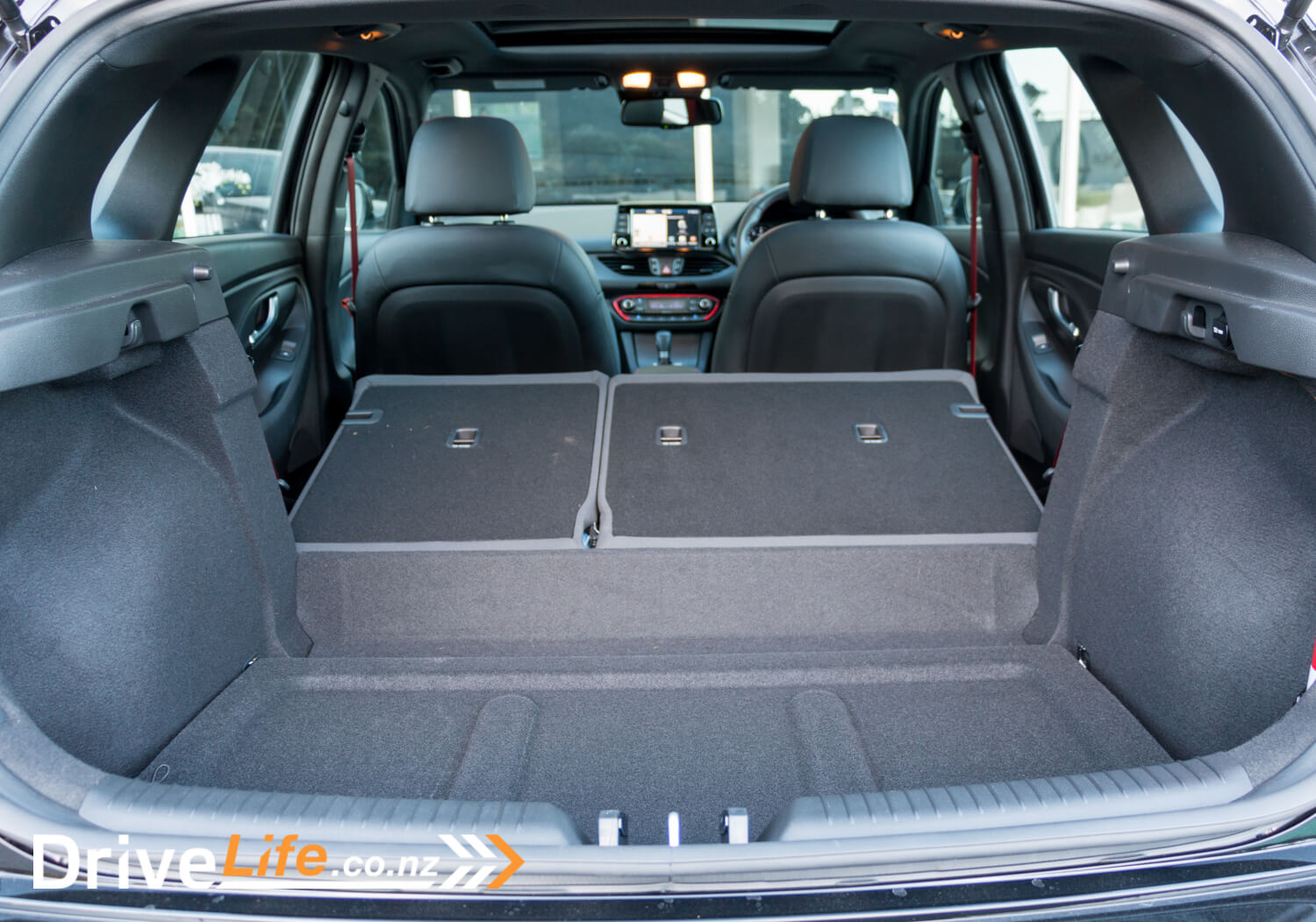
The pros and cons
| Pros | Cons |
|
|
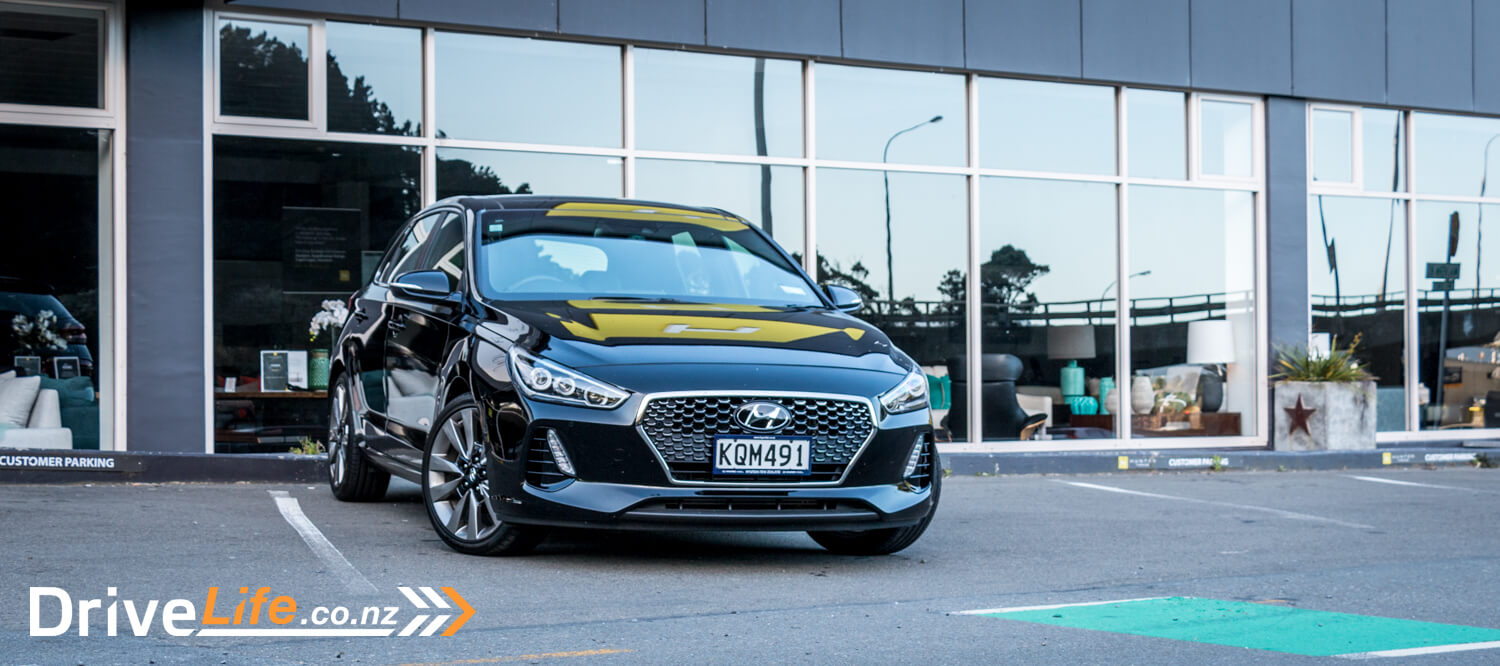
What we think
The i30 is a good family hatchback, with lots of safety tech and creature comforts. It’s spacious inside, comfortable, nippy around town and handles well. It has decent looks too, feels well-built and is backed with a good warranty.
But somehow it’s also a little bit bland, it doesn’t have that special something that the Golf or the Astra have. I’m sure anyone who bought one would be very happy with it, but for me it’s missing something that I just can’t quite put my finger on.
Rating – Chevron rating (4 out of 5)

| Vehicle Type | Medium hatchback |
| Starting Price | $35,990 plus on-road costs |
| Tested Price | $43,990 plus on-road costs |
| Engine | 1.6 litre 16-valve twin overhead cam with gasoline direct fuel injection with turbocharger |
| Transmission | 7-Speed Dual Clutch with Paddle Shifters |
| 0 – 100 kph | Not quoted |
| Spare Wheel | Space saver |
| Kerb Weight | 1,44kg |
| Length x Width x Height | 4430 x 1795 x 1455 mm |
| Cargo Capacity | 395 Litres seats up
1,301 Litres seats folded |
| Fuel Tank | 50 litres |
| Fuel Efficiency | Advertised Spec – Combined – 7.5L / 100km
Real World Test – Combined – 8.8L / 100km |
| ANCAP Safety Ratings | 5 stars |
| Warranty | 10 year / 200,000 km anti perforation corrosion body warranty
3 year / 100,000 km mechanical warranty 3 year / 100,000 km roadside assistance package |
